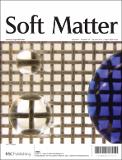Drag reduction for viscous laminar flow on spray-coated non-wetting surfaces
Author(s)
Srinivasan, Siddarth; Choi, Wonjae; Park, Kyoo-Chul; Chhatre, Shreerang S.; Cohen, Robert E.; McKinley, Gareth H.; Park, Kyoo Chul; ... Show more Show less
DownloadMcKinley_Drag reduction.pdf (1.843Mb)
PUBLISHER_CC
Publisher with Creative Commons License
Creative Commons Attribution
Terms of use
Metadata
Show full item recordAbstract
We estimate the effective Navier-slip length for flow over a spray-fabricated liquid-repellent surface which supports a composite solid–air–liquid interface or ‘Cassie–Baxter’ state. The morphology of the coated substrate consists of randomly distributed corpuscular microstructures which encapsulate a film of trapped air (or ‘plastron’) upon contact with liquid. The reduction in viscous skin friction due to the plastron is evaluated using torque measurements in a parallel plate rheometer resulting in a measured slip length of bslip z 39 mm, comparable to the mean periodicity of the microstructure evaluated from confocal fluorescence microscopy. The introduction of a large primary length-scale using dual-textured spray-coated meshes increases the magnitude of the effective slip length to values in the range 94 mm # b[subscript slip] # 213 mm depending on the geometric features of the mesh. The wetted solid fractions on each mesh are calculated from free surface simulations on model sinusoidal mesh geometries. The trend in measured values of b[subscript slip] with the mesh periodicity L and the computed wetted solid-fraction ro[subscript s] are found to be consistent with existing analytic predictions.
Date issued
2013Department
Massachusetts Institute of Technology. Department of Chemical Engineering; Massachusetts Institute of Technology. Department of Mechanical EngineeringJournal
Soft Matter
Publisher
Royal Society of Chemistry
Citation
Srinivasan, Siddarth, Wonjae Choi, Kyoo-Chul Park, Shreerang S. Chhatre, Robert E. Cohen, and Gareth H. McKinley. “Drag reduction for viscous laminar flow on spray-coated non-wetting surfaces.” Soft Matter 9, no. 24 (2013): 5691.
Version: Final published version
ISSN
1744-683X
1744-6848